
10 min lesen
August 19, 2024
Selecting the right ERP system is complex and critical for business success. What are the most common mistakes, and how can you avoid them? In this article, we provide an overview of the 10 most common mistakes in ERP selection.
One of the biggest problems when selecting a new ERP system is the lack of clear project goals. Without this clarity, it becomes difficult to align all stakeholders and ensure that the chosen solution meets the specific requirements of the ERP system. Clearly defined objectives are essential to ensure that all project participants work towards the same goal.
Imagine starting a project without a clear goal in mind. How would you know if you are successful? An unclear goal definition can result in companies failing to find the right ERP software for their needs. Therefore, it is crucial to define clear project goals before selecting an ERP system to ensure that the software meets the specific needs of the organization.
Another important aspect is the communication of these goals to all stakeholders. Everyone on the team should know exactly what the project aims to achieve and what challenges and steps need to be taken to reach this goal. Only in this way can everyone work together effectively and ensure that the project is successfully completed.
The foundation of any successful ERP selection is a thorough needs analysis. Without such an analysis, there is a risk that the specific needs of the company and the potential for improvement will not be recognized. Documenting the requirements in a requirement catalog is essential to ensure that all relevant aspects of ERP systems are considered.
By reviewing existing processes, weaknesses can be identified that may influence the selection of the ERP system. The goal of process analysis is to pinpoint weaknesses in the organization and implement improvement measures. A potential analysis helps define concrete requirements and question existing processes.
It is important to address relevant weaknesses before implementing the ERP system to avoid negative impacts on the software. Re- and restructuring measures should be carried out if necessary to ensure that the new ERP system is optimally integrated into existing business processes.

Another common mistake in ERP selection is the lack of involvement of key employees. Involving employees in the selection process helps set realistic expectations and minimize resistance. The proper involvement of employees from various departments is crucial to the success of an ERP project.
ERP selection should be planned and decided together with relevant employees to avoid bias. When key employees contribute their requirements and perspectives early in the selection process, the suitability of the ERP system can be ensured. This increases acceptance of the new system and reduces resistance during implementation.
A proactive approach in decision-making during ERP selection is necessary to drive digital transformation. The company’s strategic planning should be closely linked to the project goals of ERP implementation. A comprehensive evaluation should consider both technical and operational aspects to ensure that the ERP system meets the company’s specific requirements.
Often, the internal IT department or an IT service provider is not involved early in the selection process. However, their involvement is crucial to accommodate necessary adjustments to the existing IT infrastructure. Early involvement of IT experts helps identify important technical criteria that the future ERP system must meet.
The IT department understands the existing systems and their compatibility with new solutions. Without their expertise, critical technical requirements may be overlooked, leading to integration issues with the new ERP system. A close collaboration between the IT department and decision-makers ensures that all technical aspects are considered and that new software applications are seamlessly integrated into the existing systems.
Additionally, external IT service providers, if available, should also be included in the selection criteria. Their experience and expertise can provide valuable insights and recommendations, making the selection process easier and minimizing the risk of errors.
Lack of budget planning is another common mistake in ERP selection. A realistic assessment of project costs is necessary to avoid unpleasant financial surprises. It is important to critically evaluate service provider proposals, as they often contain incorrect assumptions about project scope.
The Total Cost of Ownership (TCO) should be included in budget planning to account for all ongoing costs and long-term expenses. A budget buffer should be planned to cover unexpected costs during the ERP project. The choice between cloud-based and on-premise ERP software can have significant financial and project-related implications.
With careful budget planning, financial bottlenecks can be avoided, and the necessary resources can be allocated in a timely manner. This contributes significantly to the success of the ERP project and ensures that all business requirements are met.
A detailed project plan should be created as early as possible to avoid delays. Thorough project planning, as well as time and budget buffers, are essential for the success of an ERP project. It is important to set clear milestones in the project plan to track responsibilities and progress.
A fixed deadline for the system transition should be set to mobilize all resources. Communication about delays and their reasons should occur early to ensure clarity and cost savings. A comprehensive analysis of existing processes is necessary to identify targeted improvement opportunities.
Without a concrete time plan, projects can stall and cause unnecessary costs. A well-thought-out schedule helps maintain oversight and ensures a smooth implementation of the ERP project.
Failing to prioritize requirements can lead to an overly complex and difficult-to-manage ERP project. It is helpful to categorize requirements into “core requirements,” “enhancements,” and “nice to have.” This helps identify the most important requirements and ensures a targeted implementation.
A lack of prioritization increases the risk of an over-engineered ERP project, making it harder to handle. Clearly defining requirements helps reduce potential risks and increase the chances of a successful ERP implementation.
A structured prioritization methodology ensures that the most important requirements remain in focus and that the project does not become unnecessarily complicated. This simplifies the selection process and minimizes the risk of poor decisions.
A comprehensive requirements catalog is essential for the successful selection of an ERP system. The market analysis of potential ERP providers should be based on specific defined requirements. Without established evaluation criteria, selecting the right ERP provider becomes more difficult.
ERP providers offer different licensing models, ranging from one-time purchase costs to ongoing subscription fees. When requesting quotes, costs should be divided into one-time and recurring expenses to provide a clear comparison. There are significant differences in operating costs between cloud-based and on-premise ERP systems.
A long-term investment calculation over five years should be pursued. Internal IT costs must be considered separately for on-premise ERP systems, while these costs are often included in subscription fees for cloud solutions. This approach ensures an objective and well-informed decision and helps identify the best solution for the company.
Finding the right ERP system can be challenging due to the vast number of over 1,000 available solutions. A shortlist can help simplify the selection process and reduce the number of providers. A narrower selection of providers reduces complexity and facilitates the final decision. When selecting ERP software, it is essential to consider the company’s specific requirements, especially when reviewing top 10 lists.
A personal exchange between decision-makers and providers should take place during the shortlist process. The presentation of solutions by providers should be conducted in real-time whenever possible to address questions directly.
By narrowing down providers strategically, the selection process can be made more efficient, ensuring that the decision is based on well-founded criteria. This approach helps identify and implement the best possible ERP solution for the company.
Key factors when comparing ERP systems include functionality, user-friendliness, cost, and support. The testing phase for ERP providers usually lasts two to four weeks and allows companies to gain initial impressions of practical use.
The remaining ERP providers should prepare concepts or a requirement specification to clearly document the requirements. An unsystematic comparison of different providers’ offers can lead to poor decisions.
It is therefore crucial to conduct a structured offer comparison to make the best possible decision. A careful and systematic evaluation of offers minimizes the risk of errors and maximizes both the benefits and success chances of the ERP project.
Now that we have examined the most common pitfalls in ERP selection, one thing is clear: To ensure your project’s success, you need the right partners by your side. At BITECC, we support you with our expertise in software development, SAP, and business process outsourcing. Our experienced consultants help you avoid common mistakes and find a customized solution that perfectly fits your company’s needs.
Ready for a successful project start? Contact us today, and let’s pave the way to your perfect ERP system together.
Selecting the right ERP system is no easy task. However, with the right approach and structured planning, many of the most common mistakes can be avoided. From defining clear project goals and conducting a thorough needs analysis to involving the right employees—each step is crucial to the project’s success.
Don’t be discouraged by the complexity of ERP selection. With the right steps and careful planning, you can ensure that your ERP project is a complete success. Let’s get started!
Clear project goals are essential because they ensure that all team members are working towards a common objective, making the ERP solution perfectly aligned with business requirements! This maximizes the project’s success!
Without a thorough needs analysis, you might overlook critical business needs, leading to costly mistakes when choosing an ERP system! You should definitely avoid that!
Involving key employees improves the selection process by creating realistic expectations and reducing resistance! This ensures that the system is optimally tailored to the company’s needs!
A realistic budget plan is crucial to avoid financial surprises! This way, you can ensure that all expenses—both short-term and long-term—are properly accounted for.

October 8, 2025
The biomethane sector is entering a decisive phase. Driven by climate targets, stricter regulations, and rising demand for renewable energy, the market is experiencing rapid growth. Yet, this expansion also creates new op...

February 3, 2025
The future of ERP lies in more efficient and flexible business solutions. In this article, you will discover how .NET-based ERP systems help you optimize processes while remaining adaptable. Explore the key benefits and technological advancemen...